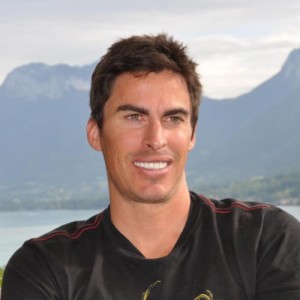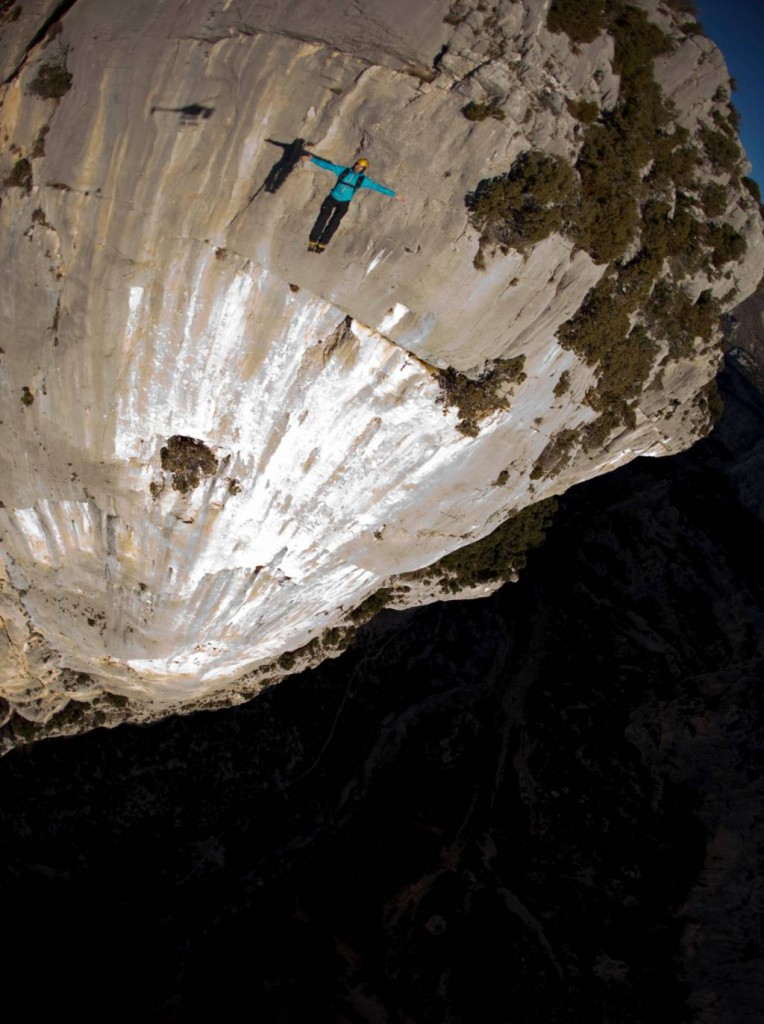Catching up with Matt Gerdes
BY: Lesley Gale
Matt Gerdes has been flying in the open air most of his life. Paragliding, skydiving, speed flying, base jumping… he is the author of the Great Book of BASE, a co-founder of Squirrel wingsuits and loves to take his friends on a flying adventure…
How many skydives, base jumps?
In the past ten years I have made close to 1,000 BASE jumps and around the same amount of skydives.
Other aerial sports you’ve done and to what sort of level?
Over 2,000 hours flying paragliders, since 2000.
Over 1,000 flights in speed flying wings, most sub 10m / 100sqft.
Equipment jumped, and history
My current main canopy is a PD Optimum and I think it’s the perfect solution for wingsuit jumping. Javelin Odyssey is my container.
Base achievements
Still alive after about a thousand jumps!
Favorite base moment
Landing safely at the foot of the Eiger north face with my friend Jimmy. It was my 19th BASE jump and I had 11 skydives at the time.

Do you like skydiving too or is it just a route to base?
I love flying. I prefer flying in the mountains, but flying above an airport is good practice.
Where do you live?
I have lived in the European Alps for most of the past 14 years.
Is that what drew you to base?
The Alps brought me to paragliding, which brought me to BASE jumping… but I plan to spend more time in the USA from now on.
How has base changed since you started?
So much, in so many ways… But mainly things have gotten easier; aerials and proximity flying used to be things that only a handful of elite jumpers did. Now it is commonplace. It’s easier because we have become habituated to the idea of it through constant exposure. But it is no less dangerous.
Why did you start Squirrel suits?
The company was born in 2012, we took our first official orders in December of that year. Now, our mission at Squirrel is to advance wingsuit and BASE equipment design to new levels of performance and safety.
Why did you decide to put 2013’s profits back into the sport?
That is inaccurate. We did, however, decide to reinvest a significant amount of our profit back into the team pilots who helped us with testing and development early on, and put the rest into R&D for current and future wingsuits and other related products. Mike and I were going to buy matching red Corvettes, but decided to spend it all on R&D and materials, instead. Oh well.
Tell me about the Swift Stitch Sweepstakes
This was basically a marketing stunt, to raise awareness of our newest suit, the Swift. We thought it would be fun to give an existing experienced skydiver a free trip to California, a custom suit, and a first flight course. All of those things together are actually quite expensive, so it was a pretty awesome prize. We had to find an objective way to award it, so we decided to let people guess or calculate the number of stitches on the front of a suit in a high res photo. Eliza Alexandra had the closest guess – she measured only a small section of stitches and then multiplied by the length of the stitch lines. We were lucky – she turned out to be a lot of fun to hang out with, fly with, and watch progress during the days we spent with her in CA. It was a lot of fun.
How did the week go, with Eliza, the winner?
So much fun – a lot of pilots came to visit and jump with us and we got to see a total wingsuit virgin land with a massive smile on her face wearing our wingsuit.
What are the Squirrel Team Sessions all about?
The first Team Session was all about bringing together our friends – who also were instrumental in providing feedback on early wingsuit prototypes – and flying with them in the mountains. The concept is simple: fly together, learn, progress, enjoy. We look forward to many more editions in the future, all over the world, and we also plan to host events which will be open to all interested wingsuit pilots.
What other reinvestments by Squirrel will we see?
We spend basically all of our money on prototypes, and testing them. We don’t publicize this process but you can see us in the middle of it at dropzones and cliffs around the world; recently we have been at Kapowsin, Sebastian, Ogden, Bex, Chamonix, Lauterbrunnen, Perris, etc.
How have wingsuits changed BASE & what will we see next?
That’s a topic for a book, not a part of an interview, but the future is bright. We are constantly working on small but significant improvements to all of our range, and we are learning new things daily. It’s incredibly complex, but there is a lot that we can do to improve comfort and performance. All of our new ideas need to be tested thoroughly, and that is very time consuming… but our main focus is improving performance without sacrificing comfort and safety. We are always looking for what we refer to as ‘free’ performance upgrades – increases that do not come at the expense of comfort or ease of use. The easiest way to improve performance in a wingsuit is to make it bigger, but that’s not the smartest, safest or most comfortable improvement. So we are looking for other ways to increase lift and decrease drag, without just making the suit bigger.
Why did you write The Great Book of Base?
Because the BASE forum is 90% bullshit, vitriol, trash-talk, and bullshit. Mostly bullshit. And at the same time, it seemed to be the main source of information for beginning jumpers… So clearly, there was a need. I never imagined we would sell so many books so fast.
How fast was that?
We printed a few thousand and at the time I never thought I would sell them all. I figured I’d have them around for a decade. We sold out in 2 years and I’m working on the second edition right now.
Note: an ebook is still available on Base-Book until Edition 2 is in print.
What are the changes in the new version?
It will be mostly the same. Almost all of the information in the first edition holds up and is relevant. I am expanding the wingsuit sections, the ultra-low sections and the equipment sections as those are the areas that the sport has grown the most in the past three years.
What could we do to reduce BASE deaths?
Increase education, decrease desire for radical video. It’s easy to criticize, but it’s hard to create
Who are your mentors?
In BASE, anyone who has been active in the sport for longer than I have with a good safety record is a mentor. In life, I look up to anyone who has the courage to take the risks to improve themselves and the things they are most passionate about, without wasting time on criticism. It’s easy to criticise but it’s hard to create.
What advice do you have for newcomers? Say, someone who just wants to proximity fly, not interested in skydiving?
You don’t have to be interested in skydiving to proximity fly. Being interested is not the point. Recognizing that you have to train in order to survive and succeed is the point. So my advice is always to skydive more than you think you need, even if you’re not interested in it.
Anyway, don’t forget that with the right people, skydiving is incredibly fun. It’s sad that so many dropzones seem to forget the fact that a friendly and positive ambience is possible. Too many DZs are just a total drag, so I understand how new jumpers get so turned off the sport, so often. It’s worth it to make the extra effort to find a good place to jump. Kapowsin is my current favorite – they manage to be professional and safe while still being polite and respectful to visiting fun jumpers even if they aren’t total skygods… this simple concept is lost on most DZs in my experience.
Describe yourself in 5 words or less
I love my friends.
Anything you would like to add?
My Christmas wish is that we, as a skydiving community, endeavor to treat each other with respect. If a person has 1 jump or 10,000 jumps, they deserve at least a minimum amount of respect. In my opinion, our default setting when interacting with less experienced jumpers should be the same amount of respect and consideration that we would show to any polite person we meet in life. Overinflated egos and pointless hierarchies don’t advance the sport, or anyone in it. I’m tired of seeing new jumpers get yelled at when they just need something to be explained. We all started at the same level.
To read more about Matt go to his personal website.
source: www.skydivemag.com
